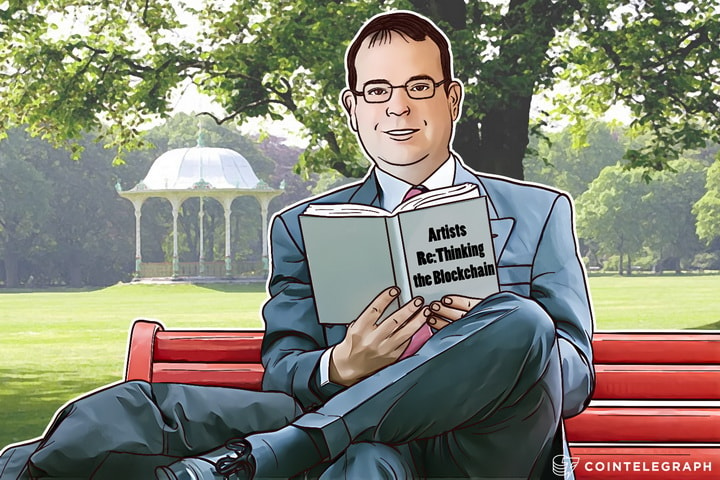An artistic project has launched a crowdfunding program to highlight the perceived negative influence of blockchain technology on art.
The project, based in the UK, aims to print an illustrated book titled: Artists Re:Thinking the Blockchain to explore the effects of this new technology on the artistic fields. The funding will also go towards hosting a public discourse program in London. The project underscores some artists’ uneasiness at the thought of this new technology being introduced into the world of art.
“Among other things, we are suspicious of cultural production being brought under the same regime as finance.”
Skepticism revolving around the “financialization” of art
The main point of contention with blockchain technology outlined in this crowdfunding project is the use of technology originally used for a financial purpose being introduced into the world of art, and a corrupting effect that can have.
“But even as we write, this “new dawn” for transactions is being re-imagined as the next sleep-cycle taking us deeper into the neoliberal dream of complete financialisation. In this dream, Finance and Technology quicken their demented mining of value tokens from phenomena, while the grammars of culture, family, nature, politics and spacetime itself evaporate into a flurry of question and exclamation marks in their wake.”
Blockchain media entrepreneurs: Blockchain is good for art
On the other side of spectrum, several artists, developers, and entrepreneurs have joined the cause of seamlessly combining art and technology through the blockchain. Mike Vine, Technology Evangelist for LBRY, a platform designed to restore ownership and financial control over artistic works to the artists themselves, thinks blockchain technology is a positive for the cultural world.
“Blockchain tech is great for artists. It allows them to share their works, earn money for them, and simply have a public record of who created what and when - all without needing big institution like a corporation or government to be the mediator. Art thrives when it is set free, and Blockchains put control back in the hands of the artists themselves. I expect to see a flourishing of new creativity in the blocknet like we saw with the dawn of the Internet.”
Troy Fearnow of Cryptoart, a project to create works of art about Bitcoin and cryptocurrency, and combine those artworks with cryptocurrency wallets, also takes the point of view that blockchain technology will set artists free.
“Blockchain is good for artists, and even better for collectors. Fraud and rights misuse saturate certain sectors of the art market especially online. Imagine if a collector could self-authenticate an art piece just by referring to the blockchain. Similarly, licensing agreements (especially in scale) would be much simpler if usage parameters were available from the original rights owner on an immutable ledger.”


